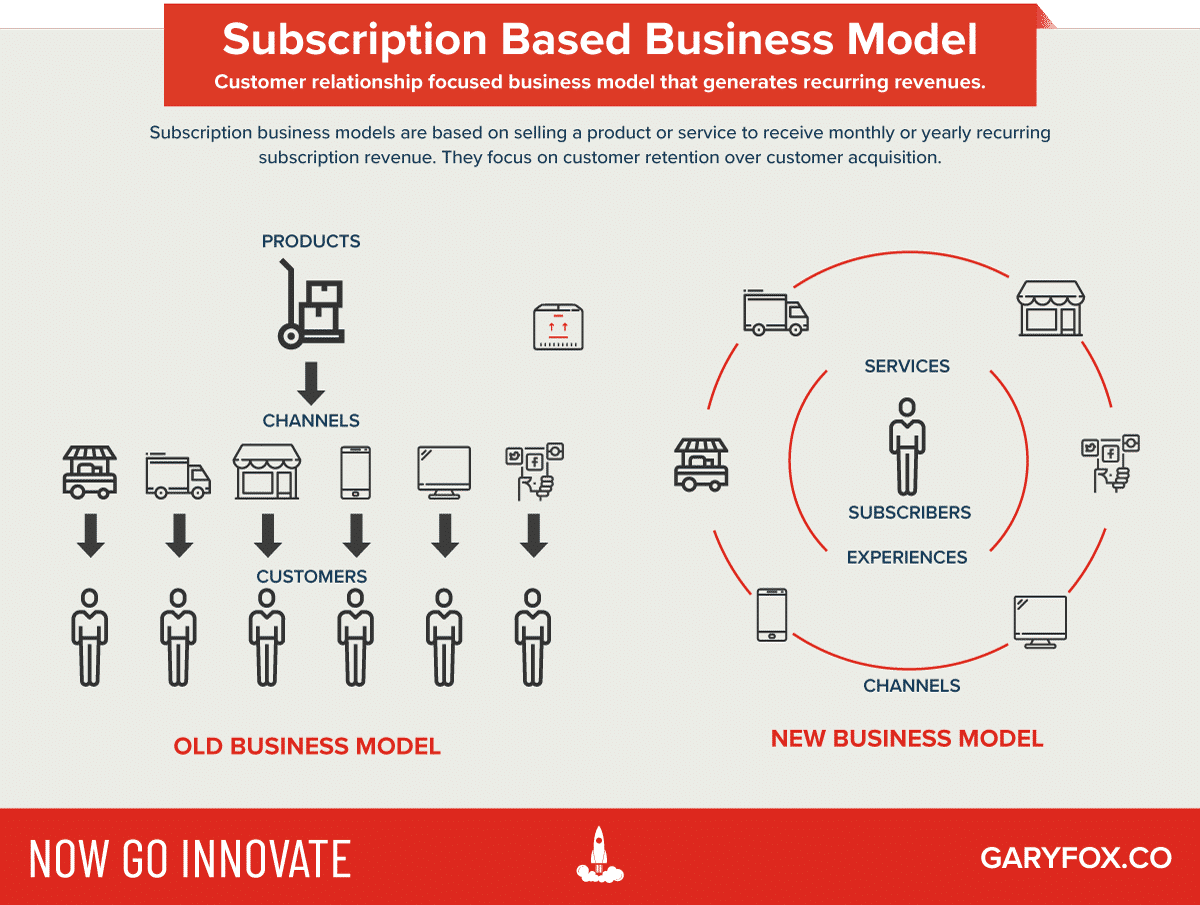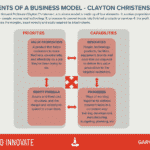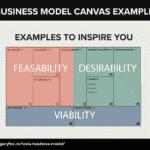Subscription business models are everywhere. From Netflix to Apple Music to Salesforce.com. Recent research found that subscription businesses are achieving 5x faster revenue growth than the S&P 500 (18.2 percent vs. 3.6 percent).
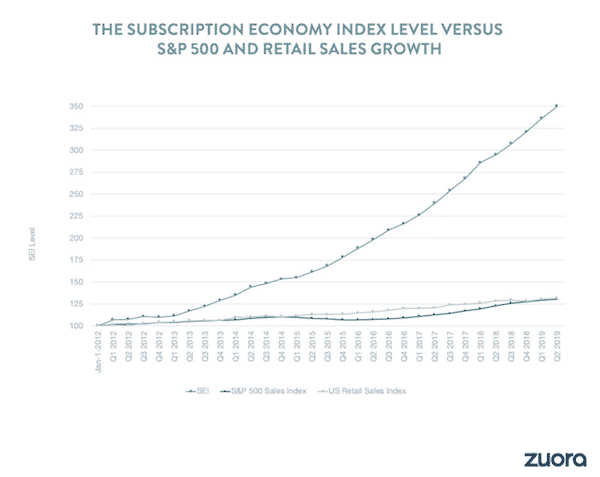
What is a subscription business model?
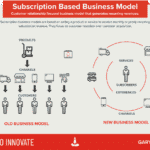
The subscription business model is based on a customer paying a regularly recurring amount in exchange for the use a product or service. From Apple Music to Netflix, companies are moving from transacting with customers to building long term relationships and recurring revenues.
- According to a survey by McKinsey & Company, 46% of customers already pay for an online streaming service and 15% have subscribed to an e-commerce service within one year of the survey.
What is different about a subscription business model?
- Selling. Selling has to drive and demonstrate value to ensure renewals (and advocacy/referrals) – see growth marketing blueprint canvas.
- Buying. Buying changes for both consumers and businesses. The business needs to align partners and create digital services to deliver customer experience and build personalized services.
- The customer experience: The business has to focus on retention and referral rather than just focusing on acquisition.
- Investors/Company – more predictable revenue, deeper customer insights, and a scalable business model.
The rise of the subscription economy
The subscription business model is not a new concept.
What has changed is how digital technologies have made subscribing so much easier. Payments processes, customer relationship management systems and EPA have radically changed business capabilities.
Today, digital payments platforms such as PayPal, Stripe, and WePay make it possible to set up and process recurring payments without massive investment.
Additionally, analytics platforms like Zuora, ProfitWell, and Recurly have given businesses better insight into consumer behavior, which companies can use to hone their subscription models over time.
As a result, the number of industries and businesses that now use a subscription business model have soared.
We associate the subscription business model with digital platform companies Netflix, Hulu, and Amazon Prime (see Amazon business model), Apple Music, Salesforce.com, Spotify and others.
But new subscription models are being created in every industry often radically shifting competitive dynamics.
Examples Of Subscription Business Models?
Magazines, newspapers, water, ice, grooming, clothing, groceries (in the form of replenishment), pet food, meals, wines and many other products have moved to subscriptions.

- Cars
- Airlines
- In-home fitness
- Gaming
- Health & wellness
- Education & professional development
- Home maintenance
- Consumables
- Entertainment
- Fashion/Clothing
1. Cars As A Subscription Model
Instead of deciding which car to purchase, people can now use rental subscriptions and change what they drive, giving them access to different vehicles. Subscription models give customers the feeling of owning many different products without the cost, responsibility, and clutter of actually buying them.
In March 2019, tech journalist Kara Swisher published an article in the New York Times proclaiming that “Owning a Car Will Soon Be as Quaint as Owning a Horse.”
The average car spends around 90% of its life parked. A shift away from privately owned vehicles towards a service – owned and run by public or private ventures is the future. Autonomous vehicles, AI and smart cities will enable efficient solutions that revolutionize the way traffic flows through cities and how people pay for these services. However, the hotly debated future, which is ten to twenty years out, revolves around how soon driverless technology will be deemed safe and practical.
For now, the move to a subscription business model paves part of the way towards a future model.
1. Audi Moves To A Subscription Business Model.
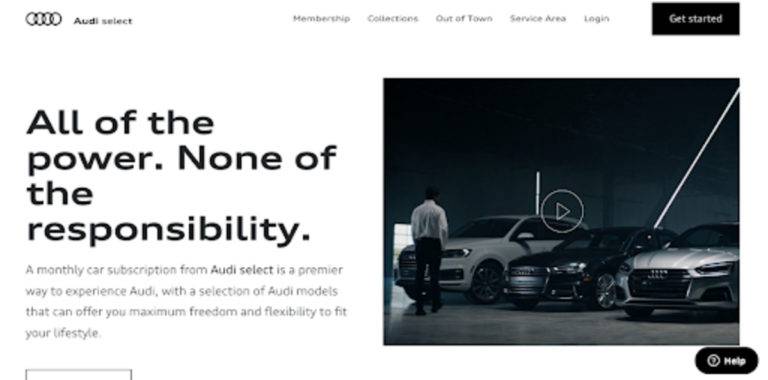
The slogan on Audi’s subscription service website captures this appeal: “All of the power. None of the responsibility.” Subscription business models offer consumers the promise of one less thing to worry about.
2. Nissan Launches Subscription Business Model

Nissan launched a two-tier subscription business model. The first tier costs $699/month and allows access to the Altima, Rogue, Pathfinder, and Frontier. The $699/month subscription covers insurance, roadside assistance, regular maintenance, cleaning, and delivery.
The second tier has a few more interesting choices, one of them being the GT-R. For $899/month, Nissan will let you swap through the Maxima, Murano, Armada, Titan, 370Z, Leaf Plus and GT-R.
3. Porsche Subscription Model

Porsche offers a two-tier subscription business model – named “Launch” and “Accelerate.”
The Launch is the more affordable choice at $2,000 a month, and it offers eight variants of the 718 Boxster, 718 Cayman, Macan and Cayenne.
Accelerate is priced $3,000 per month, but it offers a choice of 22 variants including the four models from Launch, as well as the 911 and the Panamera. Some of the variants are higher-performance versions of Launch cars.
2. Airlines As A Subscription
Subscription models offer two value propositions: 1. cheaper travel for frequent travelers. 2. The promise of less time spent in airports.
There are two types of subscription models on offer. The first offers flights and the second excludes flights but offers premium services and allowances. As an example, Delta SkyMiles Select offers a “travel benefits bundle” for $59-per-year which includes perks, drink vouchers, priority boarding, and guaranteed overhead bin space.
United, JetBlue, and Southwest also offer subscriptions, with perks such as priority boarding and overhead-bin access.
1. Flyline
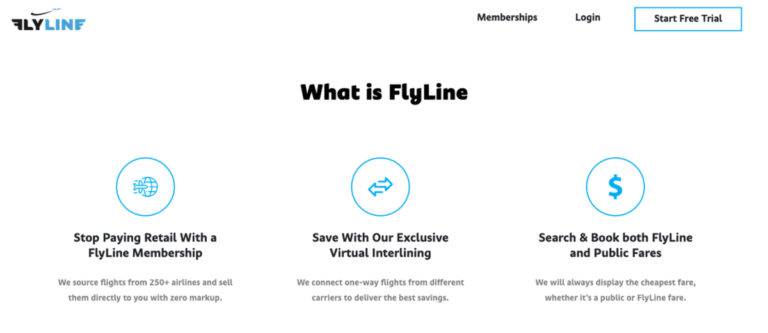
FlyLine focuses on saving subscribers money on tickets. For a $49.99 per year Basic subscription or $79.99 per year Premium subscription.
FlyLine promises “extraordinary flight deals you can’t find anywhere else.”
The company reports that its customers save an average of 10-15% on domestic multi-carrier bookings, and anywhere from 20-60% internationally.
2. Surf Air
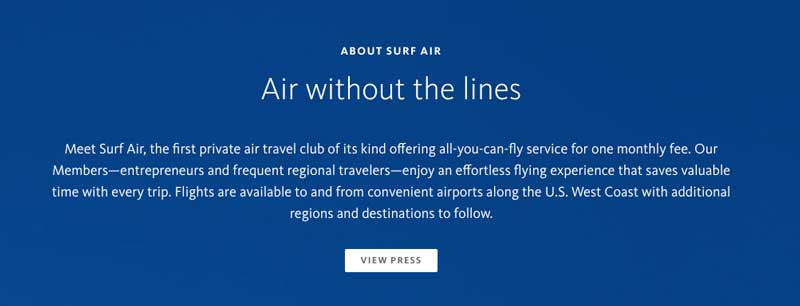
Surf Air calls itself California’s “private air travel membership,”. It offers members unlimited flights on its private planes for $1,950/month — and claims to be a more efficient service than commercial flying.
3. In-home Fitness
A global trend is towards wellness and health. The Health as a Service (HaaS) is rapidly growing as health tech shifts to the cloud and sensors make more of the data from multiple sources including wearables such as Fitbit.
Subscription fitness programs that allow customers to work out in their own homes are becoming popular.
1. Peloton
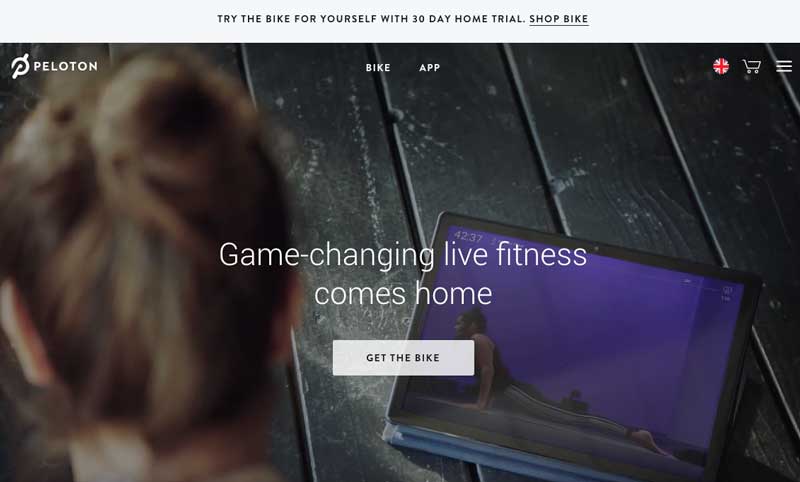
2. Fitbit
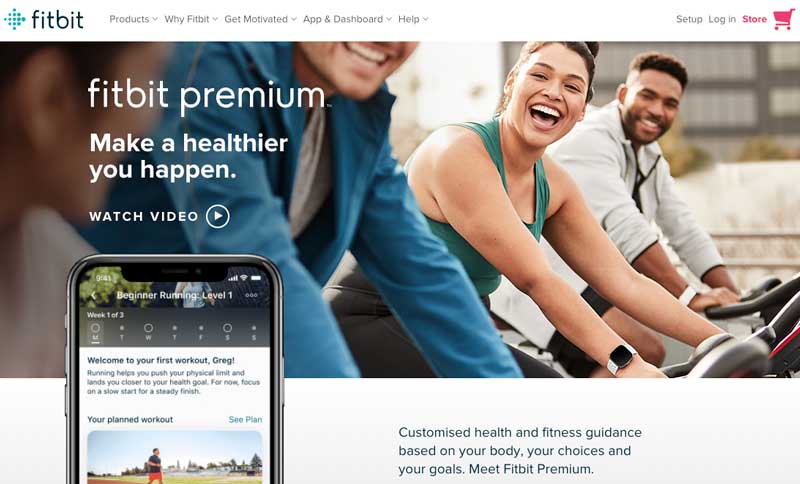
Fitbit Premium is a subscription service that offers personalized goals, challenges, coaching, and guidance for paid users for $79.99/month. They have yet to make the move though of combing the hardware ( the watches) with the subscription.
A more compelling value proposition would be to bundle the watches with a package at a higher price. However, typical of many companies, the fear of cannibalizing sales and revenue might prevent them. However, this could deliver a competitive advantage vs Apple.
Similar to Apple’s strategy of building services that are exclusive to owners of its hardware, Fitbit wants to build a service that keeps users loyal.
3. Mirror
Mirror offers the smart mirror ($1500) as part of an ongoing subscription. The value proposition is built around personalization e.g. custom workouts, based on personal preferences and goals. The company has raised $72M at a $300M valuation and counts Lululemon among its backers.
4. Tonal
Tonal applies a subscription business model to weight training. The offer is to provide a convenient in-home system that also offers fitness coaching. You get a digital weight system and interactive display with a library of personalized workouts available for a $49/month subscription.
4. Gaming
GameSpot called 2019 the “Year of Subscriptions” for the video game industry. In a similar move to films (Netflix, Amazon Prime…), gaming has now shifted to a subscription business model offering access to a variety of games rather than buying individual ones.
The disintermediation of the gaming industry follows the same path as the music industry. Owning a video game doesn’t make sense when subscriptions can offer players variety and novelty while still allowing platforms and publishers to maintain control of their products.
1. XBox Game Pass
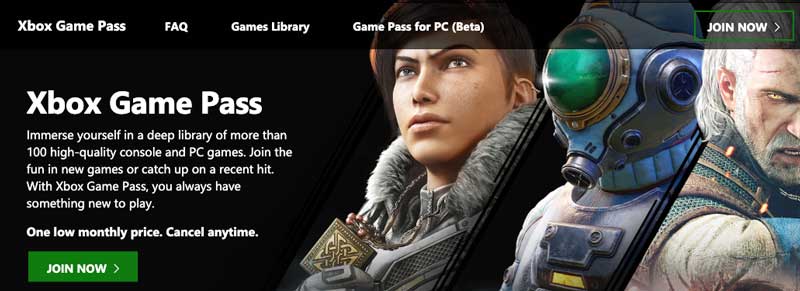
Xbox Game Pass offers subscribers access to over one hundred games for just $10 per month. Although Microsoft has not disclosed subscriber counts, some reports place monthly players as high as 65M. There are now 64 million active Xbox Live users across all Xbox gaming platforms, including Xbox One, Windows 10, iOS, and Android. Xbox Games Pass is reported to have over 9.5M subscribers.
2. Playstation Now
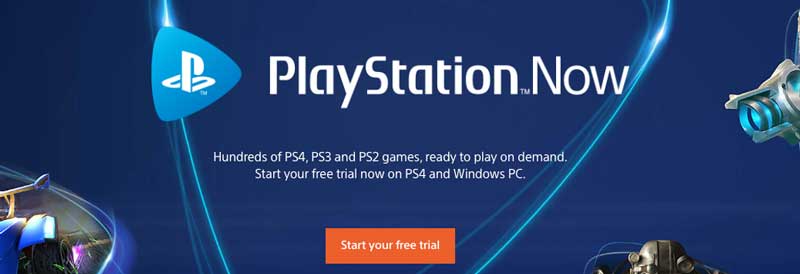
PlayStation Now has a library of 650 games available for $9.99 per month or $59.99 per year. Sony placed PlayStation Now’s subscriber count at 1M at the end of October 2019 — a 40% increase from 700,000 subscribers 6 months earlier.
5. Health & wellness
The idea of access vs ownership and staggering payments is not new in health and wellness. Headspace was one of the first apps to develop a subscription model that gave access to meditations and to a community of wellness enthusiasts. It now has over 60 million regular subscribers around the world.
As pressure on health systems increases both governments and private companies are looking for more effective and efficient ways to personalize services while lowering costs.
According to Market Research, The Global Smart Healthcare Products Market was valued at USD 35.55 Billion in 2018 and is projected to reach USD 69.68 Billion by 2026, growing at a CAGR of 8.8 % from 2019 to 2026.
1. MDVIP
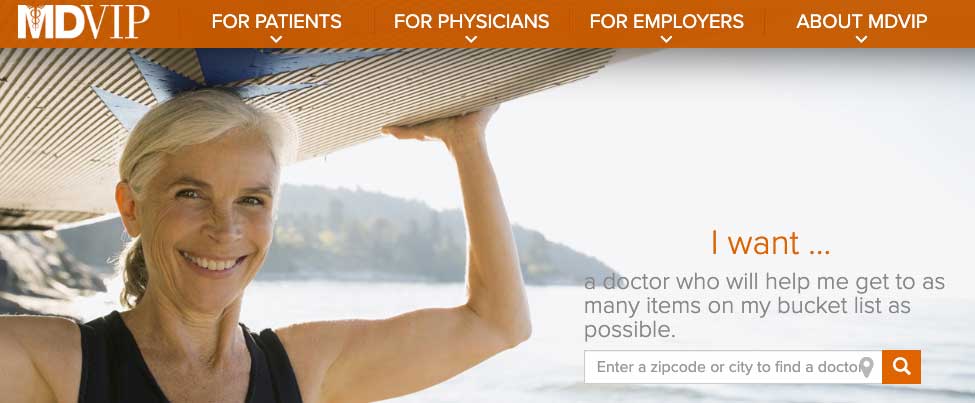
MDVIP members pay a flat yearly fee (ranging from $1,650 to $2,200) that covers preventive care and diagnostic tests, as well as a variety of value-added services like meal plans, fitness plans, and 24/7 physician availability.
2. Happify
Happify provides personalized programs aimed at improving users’ emotional health and happiness. Like Headspace, Happify is targeting companies with its Happify Health program.
6. Education & professional development
The pace of change forces employees to regularly renew their skills to be relevant in an ever-changing work environment. New technologies, agile practices and an ever-increasing need to solve complex problems are just some of the pressures facing employees and organizations alike.
The global eLearning market has swiftly grown and consolidated with many companies addressing the needs of both individuals and organizations.
A number of learning platforms such as Cousera , offer courses for free but then require payment for certifications.
1. Linkedin Learning

The social network for professionals acquired e-learning startup, Lynda, in 2015 for $1.5B and rebranded it as LinkedIn Learning. LinkedIn partners offer LinkedIn Learning courses to companies and reports that 78% of Fortune 100 companies offer LinkedIn Learning.
2. Code Academy
Codecademy, a learning platform offers many of its courses free of charge; however, a subscription to the platform’s Pro service gives learners a more focused learning experience that includes exclusive content.
7. Home maintenance
Saving time is a powerful value proposition for many customer segments. The home maintenance space appeals to people who simply have little knowledge and time to deal with home repairs. A growing number of companies are exploring ways to tap into this segment using a subscription business model.
1. Super
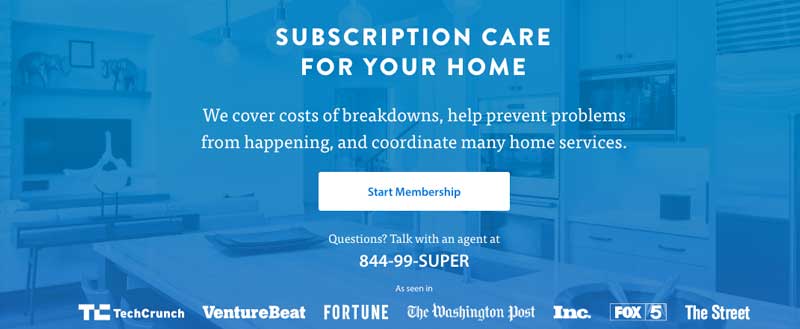
Super charges either a monthly or yearly fee. The subscription covers the cost of home maintenance and repairs which save the home owner moneycompared to the cost of a full replacement for a product plus the time saved.
2. Handy
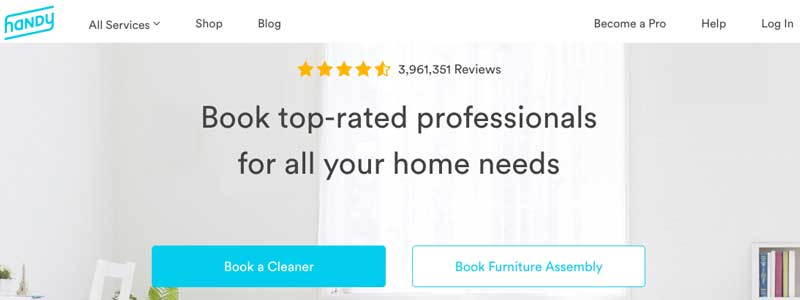
Handy offers a range of home maintenance services, from tree removal to furniture assembly. The startup has also partners with retailers such as Walmart. Walmart shoopers can add Handy’s in-home installation services at checkout.
8. Consumables
1. Dollar Shave Club
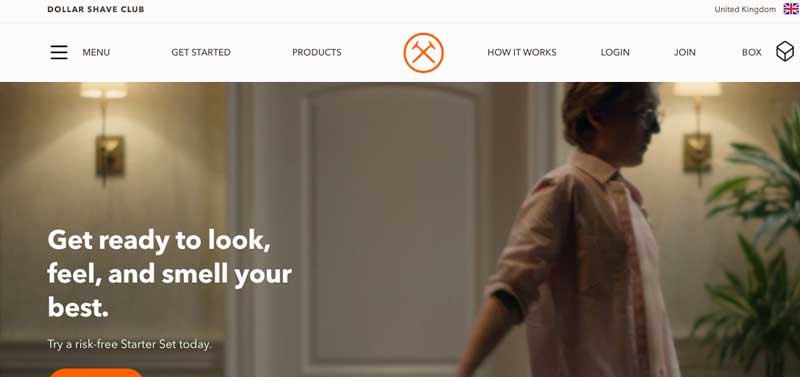
The Dollar Shave Club launched in 2012 with a revolutionary viral video that generated 12,000 new customers in the first 48 hours, growing to 330,000 customers by 2013. It is estimated to have annual revenues of over $260M.
2. HelloFresh
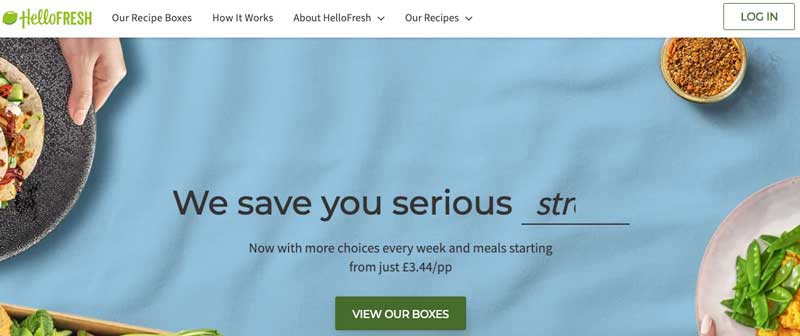
HelloFresh passed Stitch Fix to become the largest subscription e-commerce company, with $1.4 billion in 2018 sales. The Berlin-based startup that offers recipe boxes as a service though is expected to hit total earnings of over $2,000M in 2020.
3. Barkbox
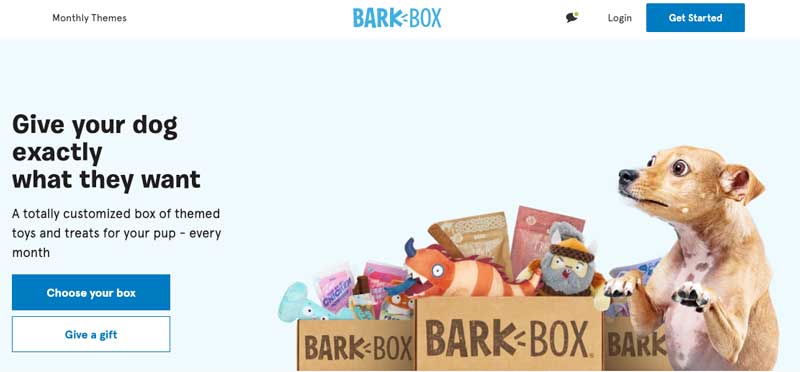
Since BarkBox is privately held, it does not disclose details of its financials. It reportedly has over 750,000 subscribers and has pivoted to now offer pet toys as a subscription as well as food.
4. Birchbox
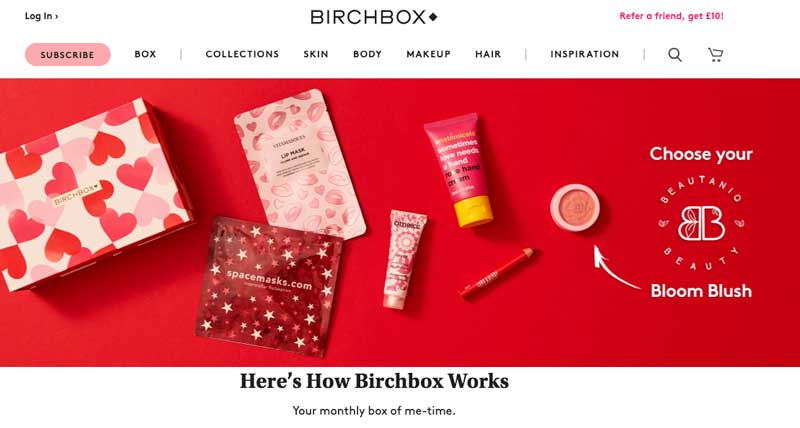
Birchbox is active in six countries with more than 1 million subscribers and 500 brand partnerships including marquee names like MAC and Lancome.
5. Cratejoy
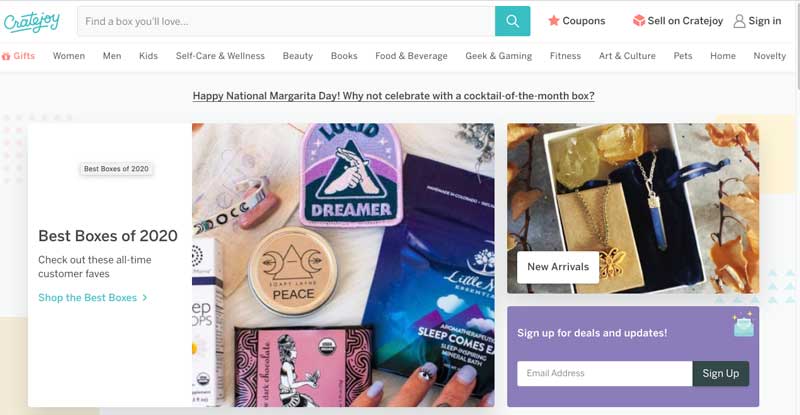
Cratejoy is actually an aggregator business model. The site aggregates all the subscription box companies in the market and makers a commission from any referred sales.
9. Entertainment – Films, Shows & Documentaries
Entertainment is a broad category but includes films, videos and other forms of online streaming services. This highly competitive market has large players in it like Netflix, Amazon and Apple.
There were tens of millions of people using video streaming services a decade ago, but that figure surpassed 1 billion for the first time in 2018.
The market though has seen the entry of new competitors like Disney that traditionally would license their content to Netflix.
1. Amazon Prime
Amazon Prime: Gives you access to selected TV streaming products, 2 million songs, playlists, thousands of books and magazines (a smaller subset of the Kindle Unlimited subscription), online storage and saves you the delivery costs for your other purchases. All this comes at a reasonable monthly subscription (or on annual basis at lower cost).
10. Fashion/Clothing
1. Renttherunway
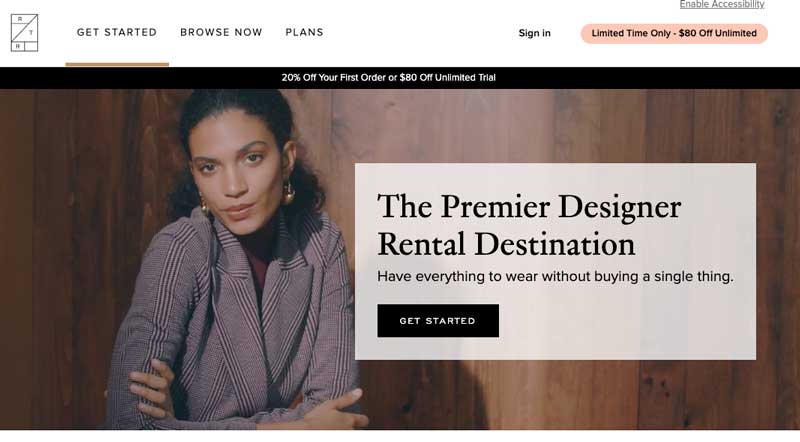
Renttherunway was the first major fashion platform that offered a subscription service for clothes. It validated that “access instead of ownership” model was possible for fashion. The clothing rental service became a unicorn in 2019.
2. Le Tote
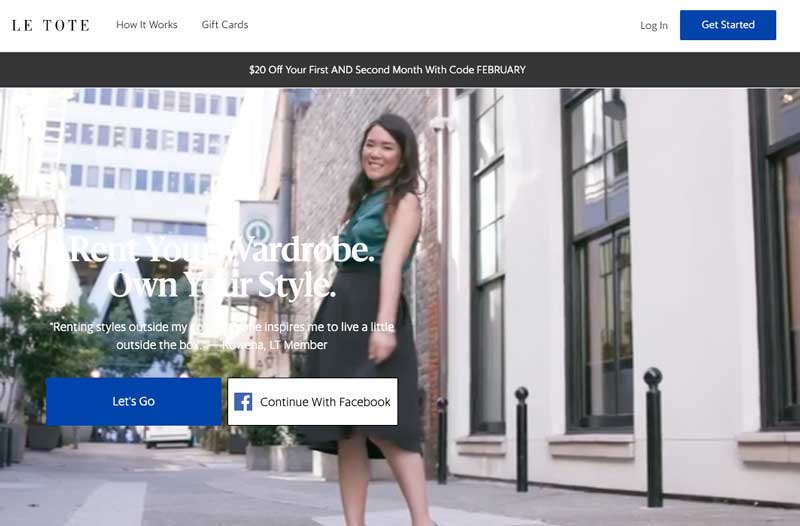
Le Tote is a fashion rental service for women’s apparel and accessories. Customers simply complete a profile and then three garments and two accessories are delivered to users. Each time items are returned, a new tote is chosen and mailed.
11. Consumer Electronics
1. GoPro
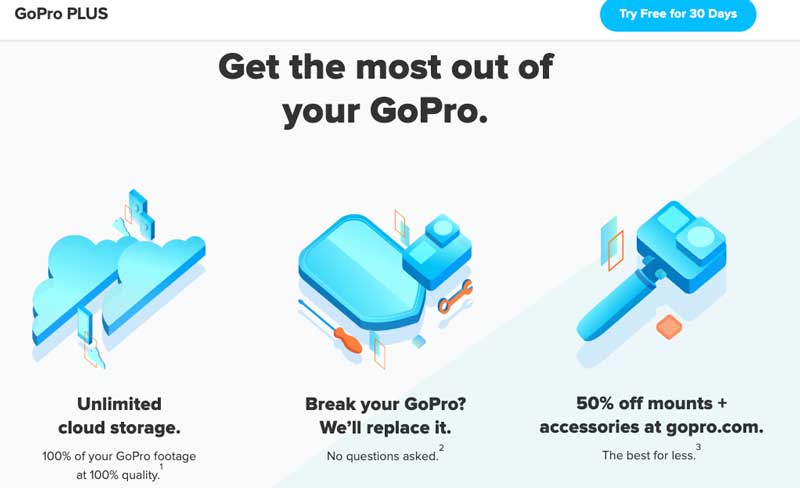
GoPro PLUS is a subscription product that includes damage replacement and a deep discount on accessories plus replacement.
12. Software as a Service (SaaS)
Adobe

Adobe moved from an annual licensing model to a monthly subscription model in 2013. The company used to have spiked transactional earnings every 18 months, but a less predictable revenue stream in interim periods. This was a critical factor in making the decision to switch from a boxed-licensed software model to a monthly cloud-based subscription model, culminating in the launch of Adobe Creative Cloud.
Why Investors Love A Subscription Business Model
A subscription business model provides a predictable revenue and a scalable model. Once the model is running it starts to create a flywheel effect and gains momentum. Plus the network effects from a large customer base delivers efficiencies e.g. with delivers.
Once a company acquires subscriber, it shifts its attention from customer acquisition to customer retention, customer lifetime value and churn rate.
A subscription business is easier to track and predict revenue, profits and growth.
Plus, companies get to know their customers a lot better, acquire more data across their customer base. Subscription models can also offer deeper customer insights.
When interactions with customers are restricted to one-off purchases, it’s difficult to develop a nuanced understanding of consumer behaviors and preferences.
Consequently, the data improves profiling and targeting for customer acquisition.
Because they’re based on recurring payments, subscription models offer predictable revenue that business leaders and shareholders can count on for strategic planning and investment purposes.
Those insights inform a company about innovation opportunities – from product alterations and new products to marketing decisions.
Consumers also tend to stick with a subscription service once they’ve signed up. As investor Eric Stromberg notes:
“Subscription is a powerful business model because it creates an environment where the default customer behavior is retention, as opposed to one where the default behavior is churn.”
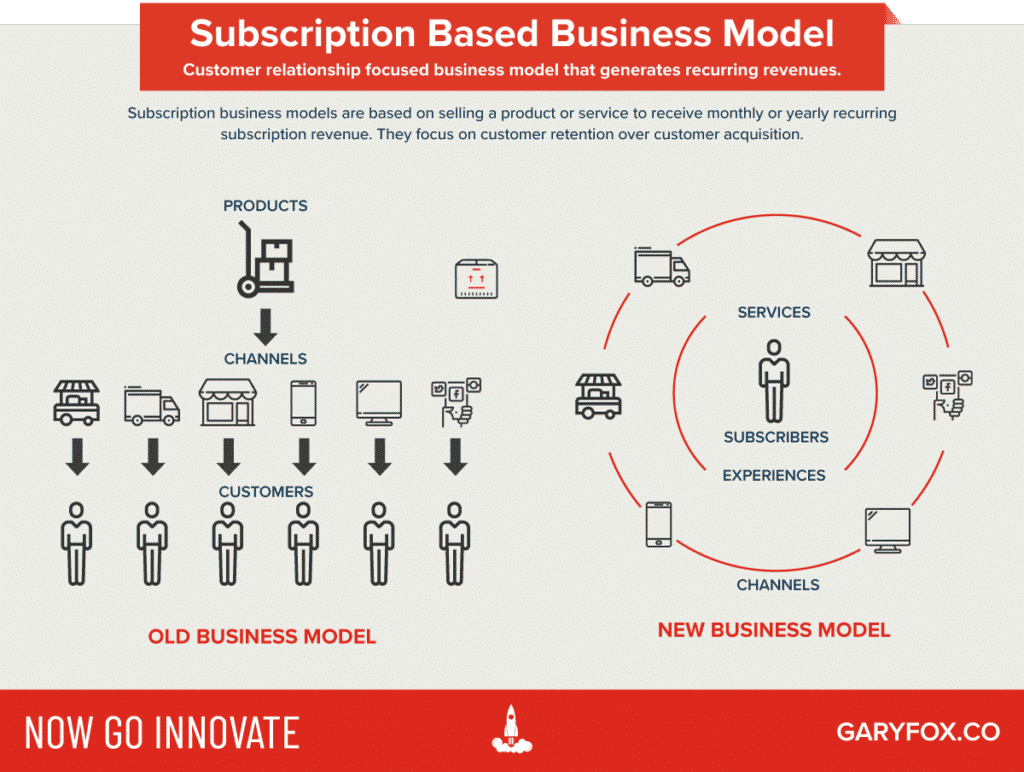
What advantages does a subscription pricing model offer a business?

Subscription-based business models are more attractive because the recurring revenue is more predictable and, hence, more valuable than on-demand purchases which can fluctuate.
Providing monthly services also enables builds stronger customer relationships since the providers has more reasons to communicate on a regular basis.
As a result, the customer benefits from a lower threshold barrier e.g. subscriptions are lower in cost than full annual payments. Also, there is reduced risk in most cases because a customer can cancel a service easily at any time.
How does a subscription business model function?
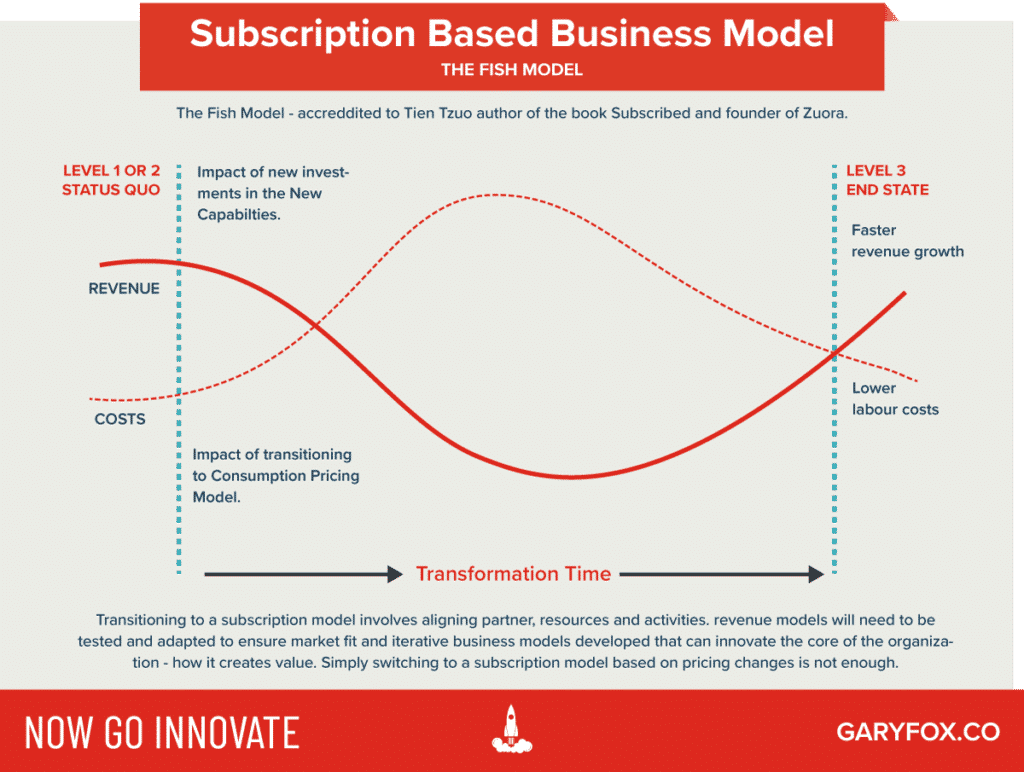
The principal idea is to switch from receiving a fixed transactional cost to a recurring charge for a product or service. For digital products or services this is easy because of the low or near zero marginal costs. However, many large organizations that sell physical products have also moved to a subscription business model.
As an example, Rolls Royce developed a “subscription” model called “power-by-the-hour” instead of selling jet engines.
A subscription business model works by moving from transaction costs to recurring revenue. Initially, this may incur a drop in revenue referred to as the Fish Model (see diagram) as revenue is captured in smaller amounts but expenses remain high prior to realigning resources and costs. In the long run, the situation reverses.
Revenues increase as customers can be added at scale, and the lifetime value of ongoing subscription customers is higher than one-transaction customers. Expenses decrease once the main SaaS infrastructure is completed, and it can be cheaply scaled.
The New Metrics – Contribution Margin, Customer Churn, Customer Lifetime Value, Cashflow
Transitioning to A Subscription business model
- Invest in customer experience and analytics: Develop AI/ML capabilities, both on the front end (voice/AR/VR) and the back end (predictive models). It will also likely mean IoT in many cases, to more accurately detect, predict and serve patterns among increasingly larger groups of customers/subscribers/members.
- Work with and help business units: Determine the best areas/modes of investment for subscription products and services as well as to optimize fulfillment and logistics.
- Consult with your technology and service providers (TSPs): Ensure that you obtain value from your subscriptions. Switching costs may be relatively low, and renewals are critical to health.
- Investigate new direct selling models (such as marketplaces and app stores): Reduce purchase and implementation friction.
- Ensure Unity Across the Organization: IT, marketing, operations, strategy, advocacy and other areas of the organization need to work together to create a successful subscription business model.
Why does moving to a subscription Business model initially decrease revenue and increase expenses?
In a business model, revenue is recognized all at once from a one-time sale. In SaaS, however, revenue is recognized in smaller increments (e.g., monthly amounts) over the life of a contract. Expenses increase as the company invests in its SaaS offering (e.g., software development, hosting, customer success teams, etc.).
In the long run, the situation reverses. Revenues increase later as the customer base increases and the business model starts to scale. Expenses decrease once the main transformation is completed.
On a graph, the interplay of revenues and expenses looks like a fish.

Developing a subscription business model involves defining how and what new value can be created by shifting the current business model to the subscription model.
Sourcing, procurement and vendor management (SPVM) elements of the organization need to be assessed and how they fit to the subscription licensing model. This may involve a transition to new procuring new resources, activities and partners.
Organizations need to conduct a full P&L analysis
Why Use A subscription business model?
Transitioning to a subscription business model starts with the customer. Understanding customer trends and behaviors are crucial to success.
- Consumer trends are shifting to outcomes over ownership. As an example, people want transportation,but they don’t care about owning a car if they have ready access to a ride via Uber or Lyft. This is often referred to as the sharing economy.
- Successful subscription businesses sell on customer experience and relationships instead of transactions. Experiences and customer relationships combine to create long-term value. This requires reducing friction across all touchpoints and developing an omnichannel strategy.
- Subscriptions generate recurring revenue. In other words, if customers are satisfied and don’t churn, subscription businesses start every year with revenue already locked in instead of starting at zero. This recurring revenue baseline makes planning easier and valuations higher.
- Product companies can be subscription companies. It is easy to see how subscriptions work for digital products. But physical products can generate subscriptions when a service is wrapped around them.
- Income Statement expenses can be thought of as Recurring Costs (COGS, G&A, R&D) and Growth Costs (Sales and Marketing). A larger recurring profit margin results in more money to spend on growth. Trading today’s profits for revenue growth can be worth it because of the ability to rapidly scale.
- Customer experiences are a critical way to create a sustainable competitive advantage.
How Do You Transition To A Subscription Business Model?
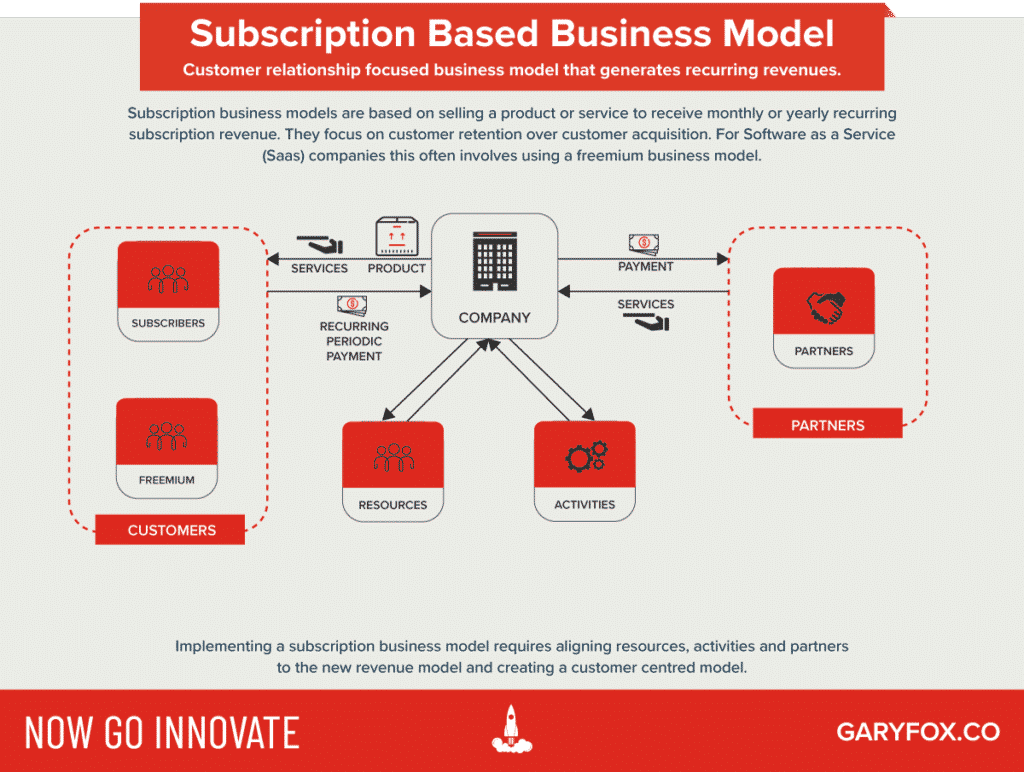
There are four stages involved in transitioning to a subscription business model. The first involves developing a strategy that can create a strategic advantage – how will this allow the firm to compete?
The first phase involves exploring what new value can be created? What strategic advantage can be created? The second phase concerns scoping what changes are needed across the firm to deliver the customer experiences and build the relationships? The third stage involves scoping the capabilities, technologies, resources…Finally, the final stage is executing using an agile to optimise the market fit and value for the firm.
While cloud models make it easy to get customers onto your new platform, it’s just as easy for them to off-board.
Swallow the Fish
Whether you’re a traditional company making the pivot to the Cloud or a born-in-the-cloud business, there’s a financial “fish” in your future that you will need to swallow.
In the case of the former, it’s the fish created by the dynamic of the revenue trough you’ll experience as you transition to the subscription model where revenue is realized over the life of the contract, coupled with the investment you need to make to stand up your cloud business.
Over a period of time, the reduced revenue and high initial expense phases diminish and your financial model transitions period to being profitable.
3 Keys to Transformation
Some key points to swallow these fish with minimal impact.
- Model your fish carefully. This means setting a plan in which you identify the approximate timeline, revenue, and cost impact of your transition.
- Company-wide input. Announce that you’re starting a business model transformation based on customer demand. Declare that the clock is ticking and that you’re setting investor expectations by sharing milestone dates for your transition. Although this may seem counterintuitive, this strategy has been proven by companies that have made the transition using this plan, notably Adobe, Autodesk, and Intuit.
- Model the transition. First, model the transition, and then announce well in advance that you are entering a period where you are executing the pivot from high growth, no profit, to lower growth with a focus on profitability.
If you’re contracting out the production of a good or service, negotiate with the maker or supplier to guarantee a steady production line and availability.
Additionally, you will also negotiate what percentage of the subscriber fee the maker or supplier will receive.
Often this payment system takes the form of a per unit, per minute or per click sale based on the number of subscribers, time or amount of service or product used, and other factors unique to your industry.
The rise of subscription fatigue
Despite the many benefits, there is a word of caution. There has been a rise in recent years in a consumer condition known as subscription fatigue. With so many businesses trying out this recurring revenue sales strategy, some consumers are becoming overwhelmed with managing the multitude of subscriptions.
Scott Stein—an editor at CNET—recently left an Apple-services event dismayed at the different ways Apple Inc. is looking to charge customers, including iPhone services, Apple News Plus, Apple Arcade, Apple TV Plus, Apple Music, and iCloud.
Suddenly, or more than ever, we’re subscribing to everything…We rent the world we live in.
Scott Stein – CNet
It is a question of whether your customers will find it a great option to receive your offering on a recurring basis, or whether it will encourage them to look elsewhere to fill their needs.
Before transitioning to a subscription business model do the research!
